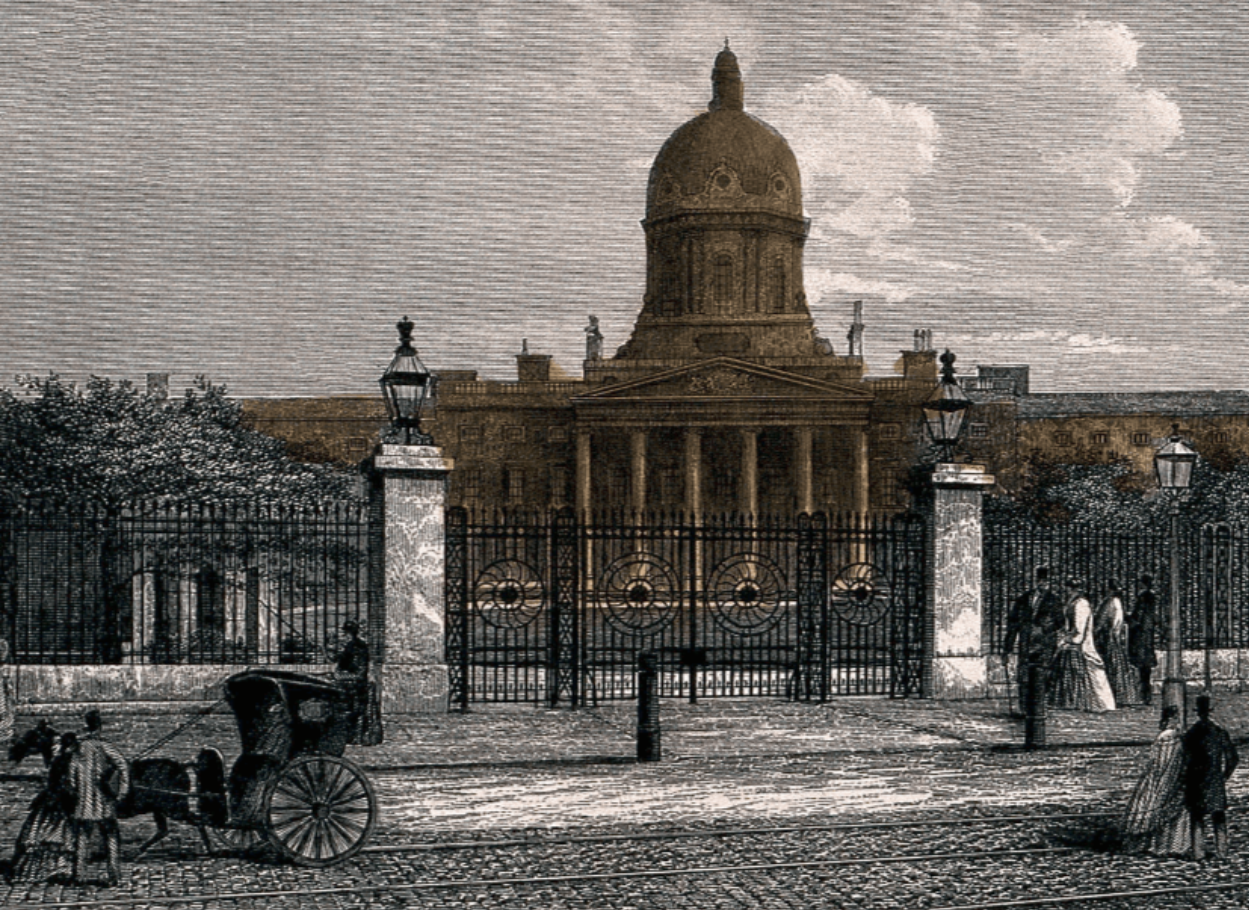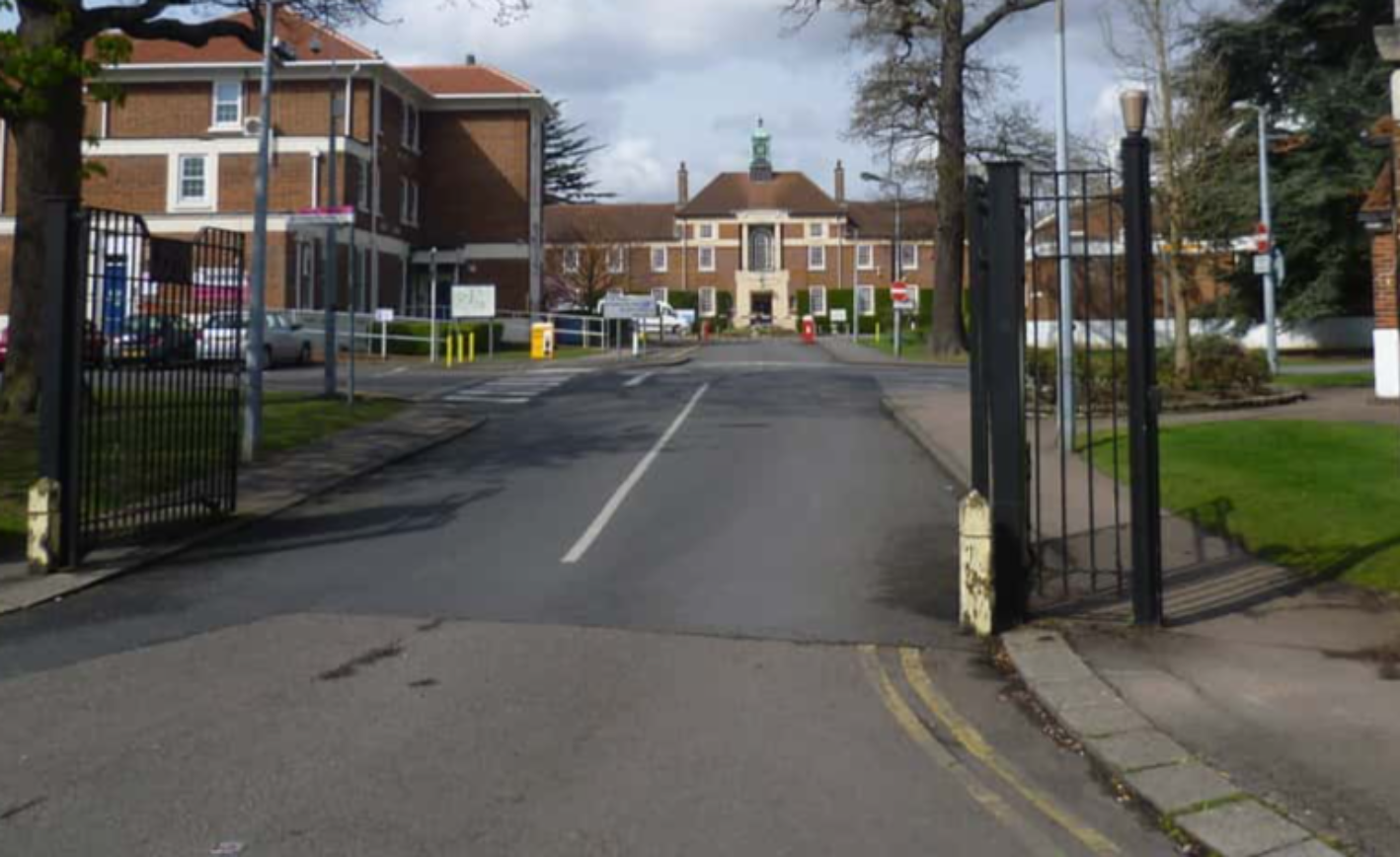In England during the 17th and 18th centuries, one of the most terrifying places in which one could find themselves trapped was Bethlem Royal Hospital. This place has gained a sinister reputation which has cast a pall over asylums and mental institutions almost to this day. But what exactly was so memorable about the infamous institute that came to be known as Bedlam? How long has it really been around? Find out the answers to these questions and more below.
42. Quite a Mouthful
Bethlem was founded in 1247 in the city of London. It was originally named the Priory of the New Order of Our Lady of Bethlehem. We can see why it isn’t known by its original name!

41. Ancient Institution
Bethlem is the “oldest extant psychiatric hospital” in European history—it has been open on a continuous basis for more than six centuries!
40. Let’s Try Doing Some Good
As the 13th century continued on, Bethlem became a hospital in all but name, providing care to poor people. It was also an institution of hospitality for visiting bishops and monks belonging to the order of Bethlehem.
39. Please Accept this Gift
The land upon which Bethlem originally stood was given as a donation by Simon FitzMary. FitzMary had been the Sheriff of London and also served as an alderman (a public official). After a career in politics had left him wealthy, FitzMary wanted to give some of that wealth to the Church. We shudder to think how he would have reacted to how his gift of property was used!
38. An Asylum by Any Other Name
The word “Bethlem” originated from the original name being shortened by the London population. It would also be pronounced “Bedlam,” which is how it is most often named within the zeitgeist.
37. It was Utter Bedlam!
The nickname “Bedlam” began being used as early as the Middle Ages. By the Jacobean era (the late 16th century to the early 17th century), the word “bedlam” was also being used colloquially to describe chaos or an uproar.
 Picryl
Picryl
36. Recycling Settings
The original location of the hospital is now occupied by Liverpool Street Station.
35. Gross…
By the 17th century, the original building of Bethlem Hospital was falling apart. To make matters worse, the building stood over a sewer which frequently overflowed (we won’t elaborate on that any further). This building was replaced by the more iconic structure that is associated with Bethlem.
34. Please Gamble Responsibly
Artist William Hogarth was one of many people to portray Bethlem, and not in a positive light. Hogarth’s series of artworks titled “A Rake’s Progress” consisted of eight paintings following the downfall of a man named Tom Rakewell. The paintings portray Rakewell inheriting a fortune, gambling it away, and ending his journey as a patient of Bethlem.
33. Abandon All Hope Ye Who Enter Here
Those familiar with the classic look of Bethlem’s building in the 17th century might know that the entrance was famously “flanked by two human sculptures wracked with suffering named ‘Melancholy’ and ‘Raving Madness.’” It wasn’t the most pleasant way to welcome people, but then again, it wasn’t exactly a leisure center they built!
32. Thanks a Lot, Erasmus!
One man who contributed to the torturous “therapy” provided at Bethlem was Erasmus Darwin, the grandfather of Charles Darwin. He came up with “rotational therapy,” which involved patients sitting in a chair which is suspended in the air. The doctor then orders the chair to be spun however quickly or slowly as he insisted. As you can imagine, this would often lead to intense vertigo and vomiting. This was done in a time when vomiting was seen as “therapeutic".
31. The Mountain that Reads
Oliver Cromwell himself has a connection to Bethlem. A porter who worked for him—whom we know only as Daniel—became one of the most famous patients in Bethlem of his time. One thing which made Daniel literally stand out from the crowd was his incredible height of 7’6”! While this would have made Daniel a highly valued basketball player today, he had to be satisfied with a personal library to accommodate his tall frame. This boon was carried out under orders from Cromwell himself.
30. Saw it Coming
As a patient of Bethlem, Daniel the ex-porter became known for more than just being tall, however—he was also a supposed prophet. He is said to have predicted the 1666 Great Fire of London, as well as the outbreak of plague which had ravaged the city preceding the fire.
29. Hurray for Violent Fanatics
The original intention of Bethlem was to be a center where donations could be collected to support the Crusades which were going on at the time. So even when it began, Bethlem was serving some form of horrifying madness.
28. Is that Ironic?
One of the more unlikely patients of Bethlem was Augustus Pugin. Pugin was previously an architect who designed parts of the Palace of Westminster, where the British Parliament meets, including the iconic Elizabeth Tower that holds Big Ben. Is there something fitting about politicians meeting in a room built by a madman?
27. Where’s the Pit or the Pendulum?
It’s been established that Bethlem began to take in people classified as “insane” in the year 1377. Very little information remains to reveal how these early patients were treated. One record from 1403 notes Bethlem’s use of “four pairs of manacles, 11 chains, six locks and two pairs of stocks". It’s guesswork as to how these tools were utilized, but given that it’s the Middle Ages we’re talking about, it can’t be anything good.
26. We’re Moving!
Bethlem was relocated yet again in 1930, with the former hospital becoming the Imperial Battle Museum in 1936. The hospital moved to the suburb of Monk's Orchard, where it remains to this day.
25. Replacing the Church with the State
Bethlem was run and organized by the Catholic Church in the 13th century. However, in 1346, the hospital was teetering on its last legs. As a result, the institution was taken over by the City of London.
24. Cruel History
Most patients in Bethlem were people from poor backgrounds. They often suffered from some form of intellectual disability, and they were usually abandoned by their families.
23. The First of Many
The first example of Bethlem’s long history with scandal and unlawful activity occurred in 1403. Peter Taverner had been serving as the hospital treasurer until he “was found guilty of embezzlement and theft of hospital property". Way to start a positive trend, Peter.
22. Fleeing the Germans
During the WW2, all the staff and patients of Bethlem were relocated from London to the English countryside, along with so many other people dealing with the London Blitz.
21. Regicide and Infanticide
Some of the patients who were kept in Bethlem were taken there after they had either attempted or completed especially sinister forms of self-immolation. These included attempts to hurt the members of the royal family or people who had ended their own family members, such as one’s own children.
20. Nothing to Rejoice About
1997 was the 750th anniversary of Bethlem, and it was suggested by the hospital administration that such an occasion should be celebrated. As you can imagine, this drew immense criticism, especially from survivors of abusive mental institutions. It was historian Roy Porter who denounced Bethlem as nothing to celebrate, saying that it was “a symbol for man’s inhumanity to man, for callousness and brutality". We couldn’t have said it better ourselves.
19. Hired by the Father, Fired by the Son
In 1619, King James I of England arranged for Helkiah Crooke to be made the keeper-physician of Bethlem Royal Hospital. Unlike the previous men who had held that position, Crooke was the younger brother of a baron and a highly educated man. Not only had he graduated from Cambridge, he’d written a book on anatomy which was highly successful in its time. Crooke, however, lived up to his name when a 1632 investigation launched by James’s own son, King Charles I, found the keeper-physician guilty of neglecting Bethlem’s patients and embezzling the funds and goods donated to the hospital. Crooke was promptly dismissed thanks to this investigation. You see that, Oliver Cromwell? Charles I did at least one thing right!
 Cromwell (1970), Columbia Pictures
Cromwell (1970), Columbia Pictures
18. Lights, Camera, Action!
In 1946, a horror B film titled Bedlam was released, based on the painting series “Rake’s Downfall” by William Hogarth (remember those?). The film starred Boris Karloff (famously known as the actor who played Frankenstein’s monster) and Anna Lee.
17. Check his Credentials
The second version of Bethlem was designed by Robert Hooke. Hooke is also known to history as being the assistant to Christopher Wren, whom you might remember was the architect who helped rebuild London after the Great Fire. Curiously, it was one of the grandest buildings in all of London at the time it was built.
16. Tom o’ Bedlams
In 1601, the British government passed an act declaring that parishes would only look after people who were physically or mentally incapable of work. As a result, some beggars would pretend to be mad to get into Bethlem rather than a workhouse. To be honest, we don’t want to know how bad the workhouses were if Bethlem was preferable!
15. Stay Away, Sick People
From the 18th to the 19th century, generations of the Monro family would provide physicians to run the treatments imposed on the patients of Bethlem. These treatments famously included starvation, beatings, forced immersions in cold water, and solitary confinement for inhuman stretches of time. Things got so bad for the patients that Bethlem would actually turn potential patients away because it was feared that they would be unable to endure the treatments. This was still known as a hospital, right?
14. Not Just for Madmen
Women were far from exempted the horrors of Bethlem. In fact, they didn’t have to be insane to be eligible. Bethlem proved a means to lock up women for all kinds of reasons that went beyond any kind of disability.
13. Haunting Past
From 1846 to 1858, Bethlem patients were photographed by Henry Hering. Hering took these pictures as part of a study in mental health. Many of the patients’ names are lost to history, leaving just their images on old photographs which immortalized them. The especially tragic part is that, at this time in history, the subjects might not even have been aware that their images were being preserved for antiquity.
12. Only a Madman Would Try to End the Mad King!
James Hadfield and Bannister Truelock (easily one of the coolest names we’ve ever heard in our lives) were two men who plotted to hurt George III of England. However, both men were found to be insane and thus were not prosecuted as murderers. They were both committed to Bethlem by reason of their insanity.
11. Thanks to Tom and Bill
One reason why the word “bedlam” became used in everyday speech was due to the 17th-century art world’s interest in portraying Bethlem or similar asylums. When it comes to the world of theatre, a prominent example of the above situation was The Changeling, the celebrated tragedy by Thomas Middleton and William Rowley. The play includes a comedic subplot which takes place which takes place in an asylum based on Bethlem.
10. What a Woman!
The Changeling wasn’t the only connection that playwright Thomas Middleton had with Bethlem. In 1611, he and collaborator Thomas Dekker published the quarto for their play The Roaring Girl. This play was a fictional account of Mary “Moll Cutpurse” Frith. Frith was a well-known thief in London who shocked her society by dressing in men’s clothes and using stogies (she’s been occasionally called the “first female smoker of England”). It’s also known that she spent time in Bethlem until her release in 1644. She would live another fifteen years after that, dying in 1659 of dropsy. 
9. Remembering Chris
Fifteen-year-old Chris Brennan lost his life at Bethlem hospital in 2014 when he succumbed to asphyxiation. Brennan had previously inflicted self-harm several times. The hospital itself was accused of failing to provide sufficient care plans or properly utilize risk assessment in Brennan’s care. For their part, the hospital took action to combat the “staffing problems and low morale” which they found played a part in Brennan’s passing.
8. Modern Tragedy
In 2010, Bethlem’s medical staff and British authorities came under fire when Olaseni Lewis was ended due to imposed restraints. The inquest found fault with the excessive force exhibited by the officers in attendance and also blamed the medical staff’s failure to intervene and help Lewis when he lost consciousness.
7. Art Born from Madness
One of the most famous cases of a murderer being kept in Bethlem was Richard Dadd. In a rather chillingly ironic case, given his surname, Dadd was committed to Bethlem after he hurt his father and later passed, convinced that his father was actually the Devil. Dadd would spend much of his life as a patient in Bethlem and Broadmoor hospitals. During that time, he created several paintings now considered to be classics.
6. It’s Like Disneyworld but for Sadists
The most shocking aspect of Bethlem was how the hospital ran tours of their patients which were open to the general public in the 17th century. The patients were treated like abused animals in a zoo, even as their plight was exploited so ruthlessly that the money made on the tours made up a significant portion of Bethlem’s budget.
5. This is Why Archaeologists Drink
With all that torturous treatment, Bethlem’s patients had a very high mortality rate. The full extent of it was not truly realized until the new Crossrail system was under construction in London. Digging into the ground on Liverpool Street uncovered literally hundreds of skeletons belonging to patients who had been quickly disposed of by Bethlem’s staff.
4. Sinister Doctor
The apathy of families abandoning their relatives to a hellish existence in Bethlem led to a new form of exploitation. From the 1700s to the 1800s, there was a marked increase in the dissection of bodies to learn more about human anatomy. In the 1790s, Bethlem’s chief surgeon was Bryan Crowther, a man who saw opportunity in the search for corpses to study. Crowther would dissect Bethlem’s passed patients in the name of medical science, believing that he would be able to find a difference in the brains of his mentally ill patients, compared to "normal" people. Of course, he did these operations without any kind of consent or lawful right.
3. The Mad Ruling the Mad
John Haslam was one of the most sinister figures in the history of Bethlem, and it was while he was the head of management that the institution sunk to a new low in depravity. While Bryan Crowther (remember him?) was conducting unlawful dissections as chief surgeon, Haslam used various tortures against the patients. He was adamant that the first step to curing the patients was breaking their wills first. It honestly makes us wonder how insane Haslam himself must have been to believe that even after he failed to actually cure anyone in Bethlem!
2. This Must End
Haslam and Crowther were finally stopped thanks to the efforts of philanthropist Edward Wakefield in 1814. Defying all attempts to keep him away, Wakefield forced his way into Bethlem after bringing along a member of the British parliament. Horrified by the depraved conditions, Wakefield petitioned for something to be done. This led to a long inquiry which ended with Haslam and Crowther being removed from their positions (to say the least).
1. Inhuman Conditions
Among the observations made by Edward Wakefield upon his 1814 visit to Bethlem, one of the worst ones was the example of James Norris. Norris, an American Marine, had been sent to Bethlem on the 1st of February 1800. When Wakefield met him in Bethlem's "incurable wing," Norris’ arms were pinned to his sides by iron bars. He was also kept chained to the wall by his neck. This fifty-five-year-old man had been continuously kept in this position for “more than twelve years". No wonder Wakefield was horrified.













































